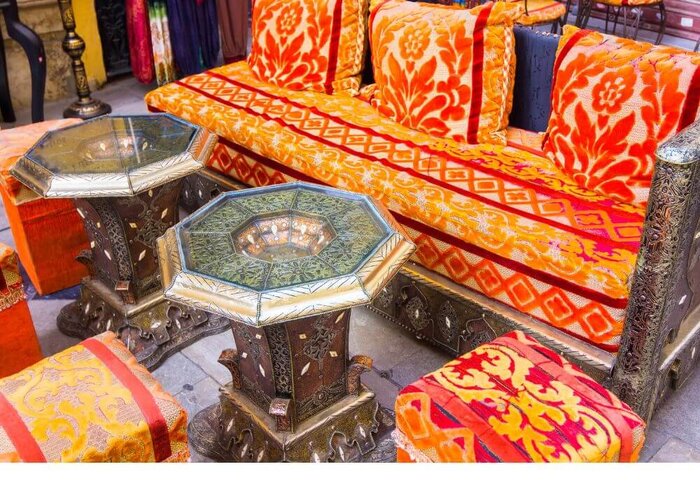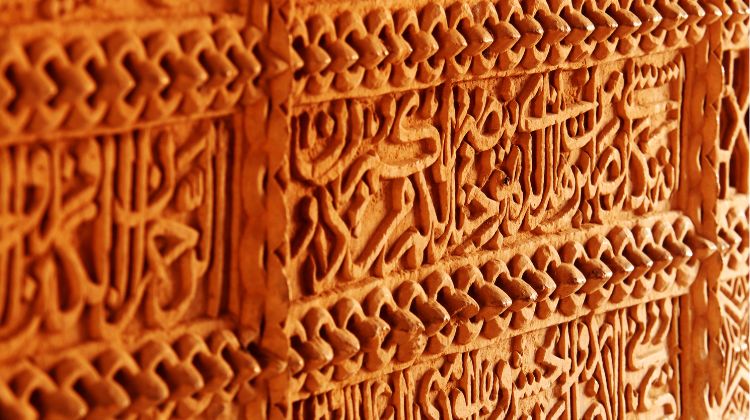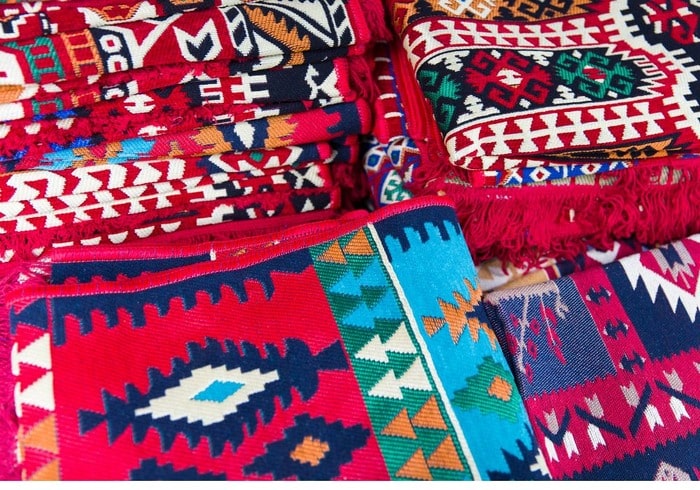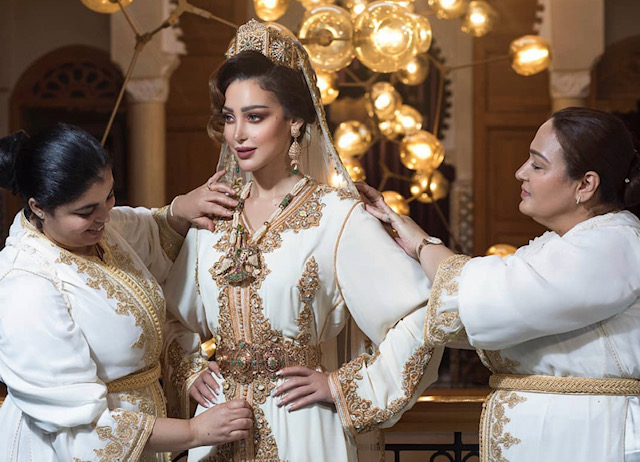Arabic Furniture

The first thing you will notice when entering an Arab home is the unique furniture and decor that is common in many Arab households.
This furniture has a rich history with cultural roots in Islam and is an integral part of furnishing any modern Arab home.
It has many distinctive characteristics and adds to the cultural identity of the household
Table of Contents
How Arab Furniture Originated:

Arab or Islamic art began during the Umayyad period (660-750).
The Umayyads used popular art from the Mediterranean and Persian lands as a foundation to create their own style.
The Abbasid dynasty later added their own touches to this style, which is now known and appreciated worldwide. You can see this style in the calligraphy on household items like tables and storage chests.
The Fatimid dynasty had a significant impact on art in the region and Old Cairo became a center for many artisans.
Furniture is not as important in the Middle East as it is in North Africa. In the 15th century, Arab decor started using elements and techniques from Europe and Africa.
Arabic furniture has gradually evolved over time, combining local materials and methods with influences from Europe, Persia, and other surrounding areas.
This evolution is based on customer needs, materials, fashion, and art.
The Most Famous Arab Furniture Pieces:
There are so many Arab furniture pieces that belong to different areas and eras. However, these items in an Arab furniture set are the most common and you can never go wrong with them.
The Carpet:

Carpets hold a special place in Arab culture and are highly valued for their beauty and craftsmanship.
Arabs are known for their love of high-quality carpets and often choose them with care.
Historically, carpets played a central role in Arab households and were used for sleeping, cooking, working, and praying.
Each region in the Arab world has its own unique techniques and styles for making carpets, and some are made specifically for certain purposes such as praying or decorating.
Today, carpets are still an important part of Arab culture and can be found in many homes throughout the region.
The Round tables:
Round tables are a common feature in Arab furniture. Many Arabs opt to have a custom-made, high-quality table crafted from scratch, which can be quite expensive.
They often hire a woodworker, known as a Najjar, to handle every aspect of the process, from purchasing the highest quality wood to adding ivory fillings to the table carvings.
The Najjar is responsible for ensuring that the finished product is of the highest quality and meets the customer’s specifications.
Coffee Tables:
Just like large tables, small coffee tables are also very common and you can find them anywhere. These are usually made to resemble the larger table in style and shape.
The Chandelier:
In any Arab household, you go to, you will always find a towering large chandelier with bright lights. Though the chandelier isn’t Arabic in origin, it remains a theme in most households.
Boxes:
Chest drawers are a type of storage furniture that is commonly found in European homes.
In contrast, Arabs have a tradition of using boxes for storage, which are often made from heavy-duty wood and feature a large lock in the middle.
These boxes serve a variety of purposes, including storing and protecting jewelry and other valuable items.
Many women in the Arab world use these boxes as a safe place to keep their personal belongings, and they are often considered an important part of the household.
In addition to their practical use, these boxes can also add a decorative touch to a room and be used as a statement piece in home decor.”
Covers:
In many traditional Arab houses, it is common to use long curtains instead of doors to separate rooms.
These curtains hang from the entrance of the room and are used to provide privacy and block out light.
It is not uncommon for Arab homes to have open windows and minimal barriers between rooms, as the use of curtains allows for flexibility and adaptability in terms of privacy and circulation of air.
Lanterns:
Lanterns have a special charm to them on Ramadan nights or celebrations. These Lanterns usually made with sturdy steel and colorful glass can change the way you see the night in Arabian cities.

Where Can You Buy Arabic Furniture:
Arabic furniture is known for its unique style and craftsmanship, and there are many places online where you can purchase these items.
However, it is important to keep in mind that these sellers may be looking to make a profit, so it is worth considering other options as well.
One option is to visit a workshop or artisanal market where furniture is made and sold by local craftsmen.
This can be a great opportunity to see the quality of the furniture firsthand and ask about the materials and techniques used.
It is also a good idea to take some measurements to ensure that the furniture will fit in your home.
By going directly to the source, you can find authentic and high-quality Arabic furniture that fits your personal style and budget.






